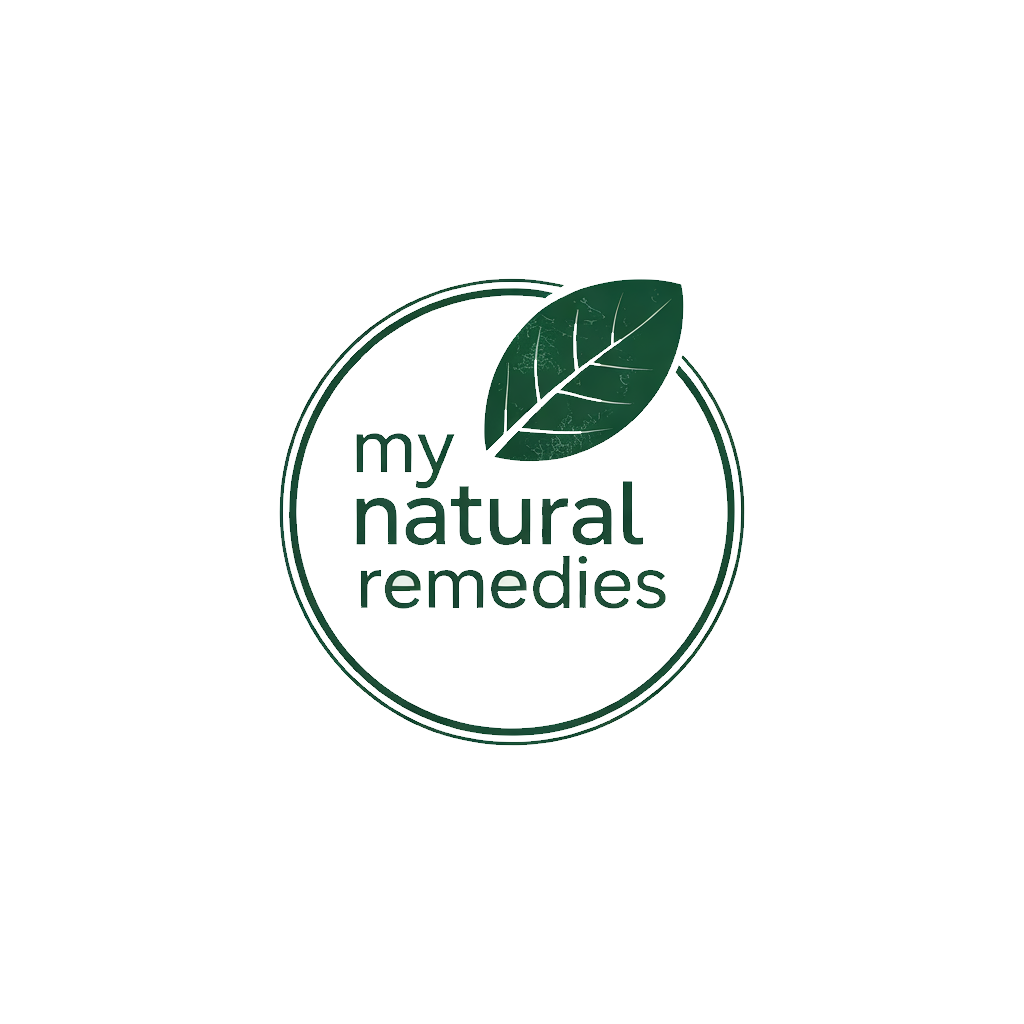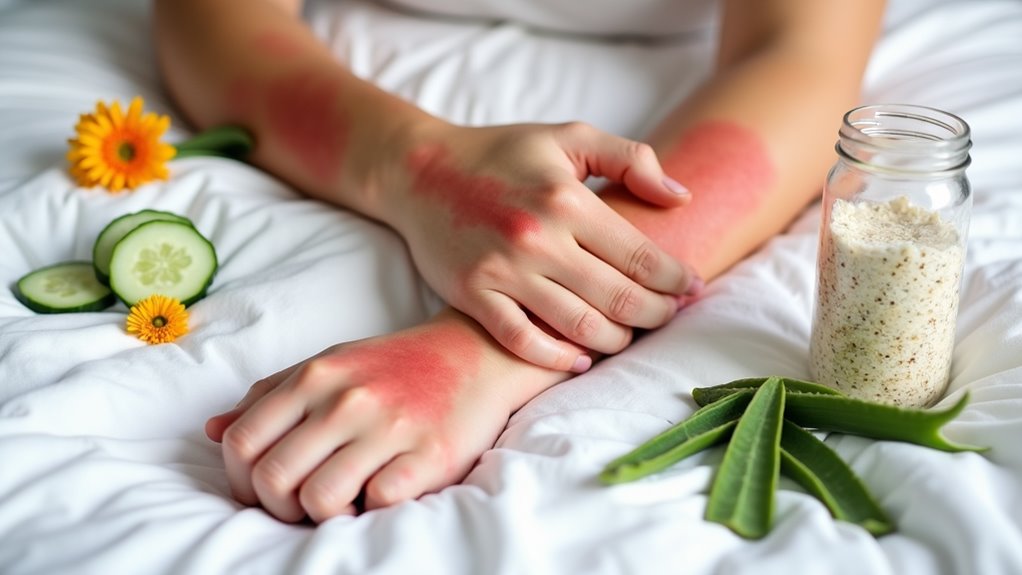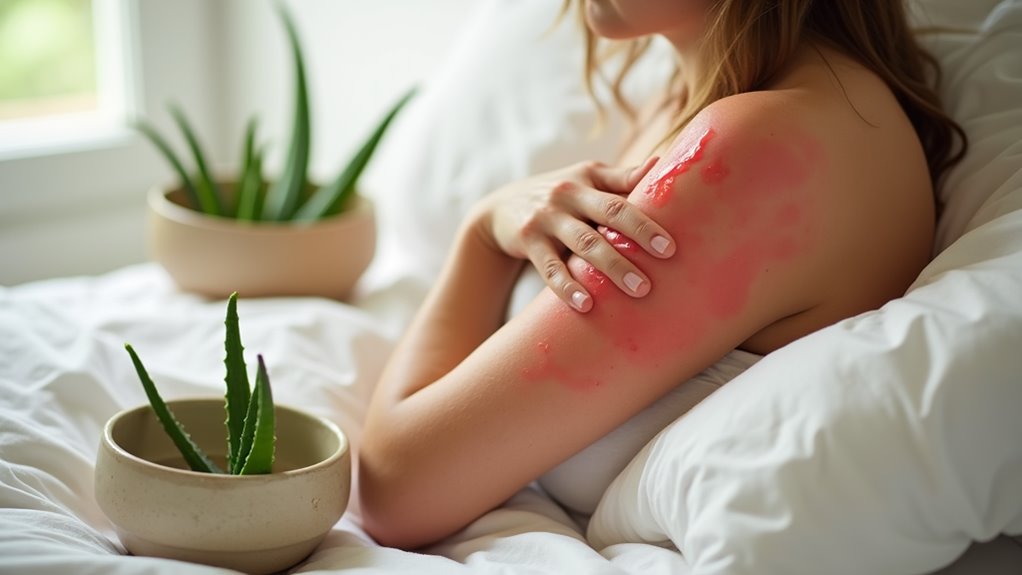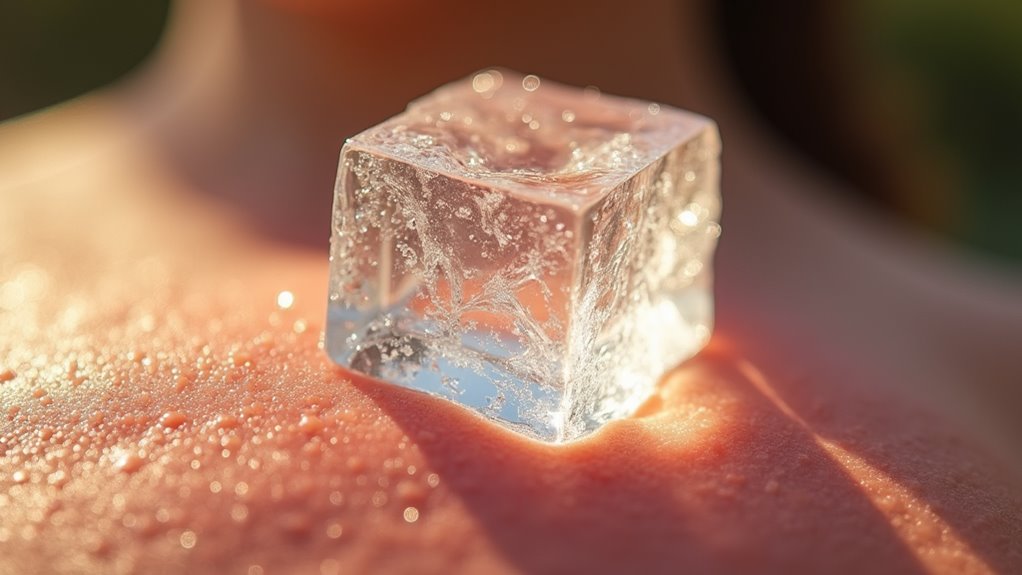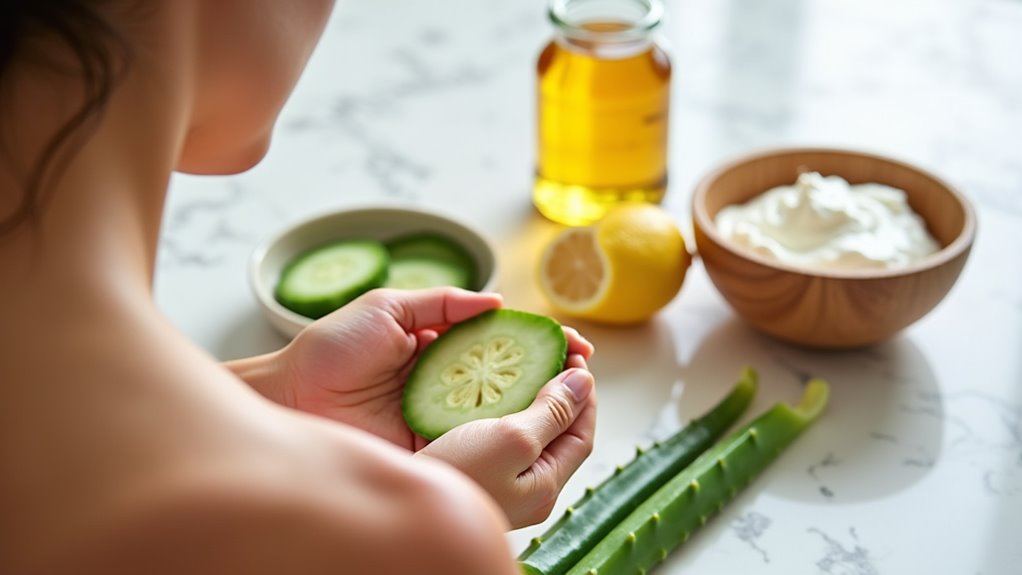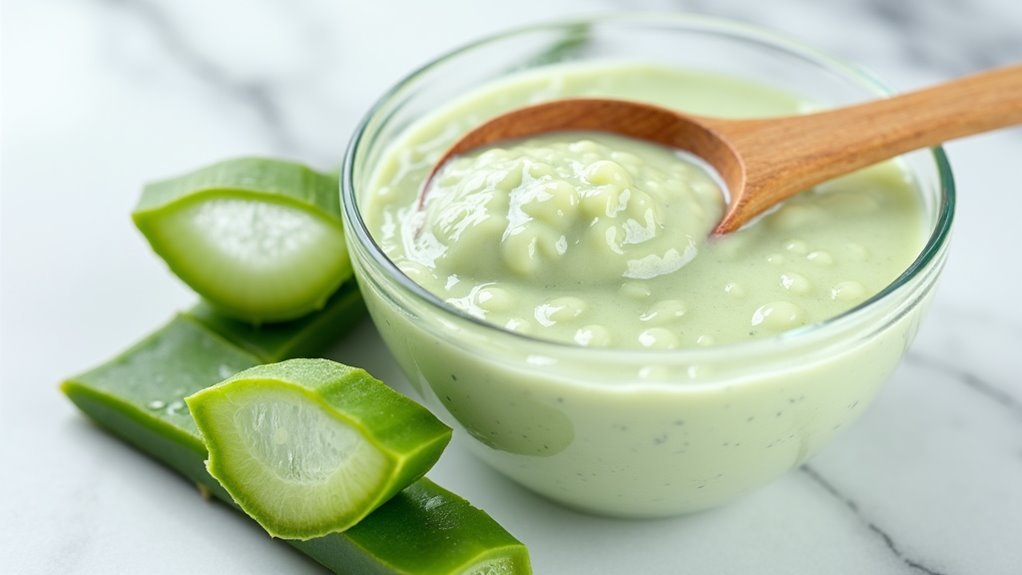Poison Ivy Nightmares. 5 Natural Remedies to Soothe Your Skin!
You’ll find fast relief from poison ivy’s maddening itch with these proven natural solutions right from your kitchen. Create a soothing oatmeal-baking soda paste, apply apple cider vinegar followed by cooling aloe vera, or use diluted essential oils like tea tree and lavender. Herbal compresses with chamomile or witch hazel can dry out affected areas while reducing inflammation. These gentle yet effective remedies offer the comfort you need to tackle this pesky rash.
Understanding Poison Ivy Rash and Its Effects on Skin
When poison ivy comes into contact with your skin, it triggers an allergic reaction caused by urushiol, an oily resin found in the plant’s leaves, stems, and roots.
Within 12 to 48 hours, you’ll notice redness, swelling, and intense itching. These symptoms can develop into painful blisters that may last for several weeks.
You’re not alone in this uncomfortable experience – up to 85% of people are allergic to poison ivy.
The rash typically appears in streaks or patches where the plant brushed against your skin.
While you’re searching for poison ivy remedies, it’s important to understand that the rash isn’t contagious and can’t spread through blister fluid.
However, you can develop new rashes if urushiol remains on your clothing, pets, or gardening tools.
The severity of your reaction depends on your sensitivity and the amount of exposure, but even a small amount of urushiol can cause significant discomfort.
Soothing Oatmeal and Baking Soda Treatment
Among the most effective natural treatments for poison ivy rash, oatmeal and baking soda stand out as readily available household remedies.
When you’re dealing with the intense itching and discomfort, these gentle ingredients can provide significant relief while supporting your skin’s natural healing process.
To create a soothing treatment that’ll ease your symptoms, try these proven methods:
- Mix colloidal oatmeal with cool water to form a paste, then apply it directly to affected areas for 15-20 minutes to reduce inflammation and itching.
- Create a calming bath by adding 1 cup of baking soda to lukewarm water, then soak for 20 minutes to neutralize the urushiol oil and dry out the rash.
- Combine equal parts oatmeal and baking soda with enough water to make a paste, then apply this powerful duo to get the benefits of both ingredients.
These natural solutions work with your body’s healing mechanisms while providing immediate comfort. Additionally, incorporating probiotic foods into your diet can enhance your skin’s overall health and resilience.
Apple Cider Vinegar and Aloe Vera Applications
Both apple cider vinegar and aloe vera offer powerful natural relief for poison ivy symptoms, working in distinct yet complementary ways.
You’ll find that apple cider vinegar’s natural acidity helps dry out the rash and reduce itching, while its antimicrobial properties fight potential infection. Simply dab the vinegar onto affected areas with a cotton ball, or add two cups to your bath water for full-body relief.
Aloe vera’s cooling gel works differently by calming inflammation and accelerating healing. You can apply pure aloe gel directly from the plant or use an over-the-counter version that’s at least 98% pure.
For best results, combine these treatments by first applying the vinegar solution, letting it dry completely, then following with a layer of aloe vera. Many fellow poison ivy sufferers have found this two-step approach particularly effective, especially when you repeat the process three times daily until symptoms subside. Additionally, yeast infections can be exacerbated by scratching the affected area, so it’s essential to keep your skin protected and avoid irritation.
Essential Oil Remedies for Itch Relief
Several powerful essential oils provide quick relief from poison ivy’s relentless itch, offering another natural option alongside vinegar and aloe treatments.
When you’re dealing with this painful rash, these concentrated plant extracts can be your trusted allies in finding comfort and healing.
To safely use essential oils for poison ivy relief, you’ll need to dilute them with a carrier oil like coconut or jojoba oil before applying to your skin. This helps prevent irritation while maximizing the soothing benefits.
-
Tea tree oil: This antimicrobial powerhouse reduces inflammation and helps dry up the rash while fighting potential infection.
-
Lavender oil: Known for its calming properties, it eases both the physical discomfort and emotional stress of poison ivy.
-
Peppermint oil: Creates a cooling sensation that temporarily numbs the affected area, providing immediate itch relief. Incorporating antifungal properties from natural remedies can enhance your overall skin healing process.
Apply your chosen oil mixture 2-3 times daily until symptoms improve.
Herbal Compresses and Natural Astringents
When poison ivy’s angry rash strikes, herbal compresses and natural astringents can provide immediate comfort while helping to dry out the affected areas. You’ll find relief by applying a cool compress made with steeped chamomile tea or witch hazel, both of which contain natural anti-inflammatory properties that calm irritated skin.
Create a soothing compress by soaking a clean cloth in cooled green tea or calendula tea, then applying it directly to the rash for 15-20 minutes. You can also try apple cider vinegar, a natural astringent that helps dry blisters and reduce itching. For best results, dilute it with equal parts water before application.
Another effective option is jewelweed, a wild plant often found growing near poison ivy. Simply crush the stems and leaves to release the juice, then apply it to your skin. Many outdoor enthusiasts swear by this traditional remedy passed down through generations.
Frequently Asked Questions
How Long Can Poison Ivy Remain Potent on Unwashed Clothing and Shoes?
You’ll need to wash your clothes and shoes quickly, as urushiol oil from poison ivy can stay potent for up to 5 years on unwashed items, putting you at risk.
Can Pets Spread Poison Ivy Oils From Their Fur to Humans?
Yes, your pets can spread poison ivy oils to you from their fur. Since they’re immune to the rash, they won’t show symptoms, but the oils on their coat remain active for days.
Is Poison Ivy Rash More Severe During Certain Seasons or Weather Conditions?
You’ll notice poison ivy rashes can be worse in summer when you’re sweating more. Hot, humid conditions increase skin absorption, and spring’s fresh plant growth is particularly potent with oils.
Can Someone Develop Immunity to Poison Ivy After Multiple Exposures?
You can’t develop immunity to poison ivy – in fact, you’ll likely become more sensitive with each exposure. Many people experience increasingly severe reactions over time.
What’s the Best Way to Identify Poison Ivy During Winter Months?
You’ll spot poison ivy in winter by looking for woody, gray-brown vines with aerial roots climbing trees. While leaves are gone, these thick, hairy vines remain visible and still contain the irritating oil.
